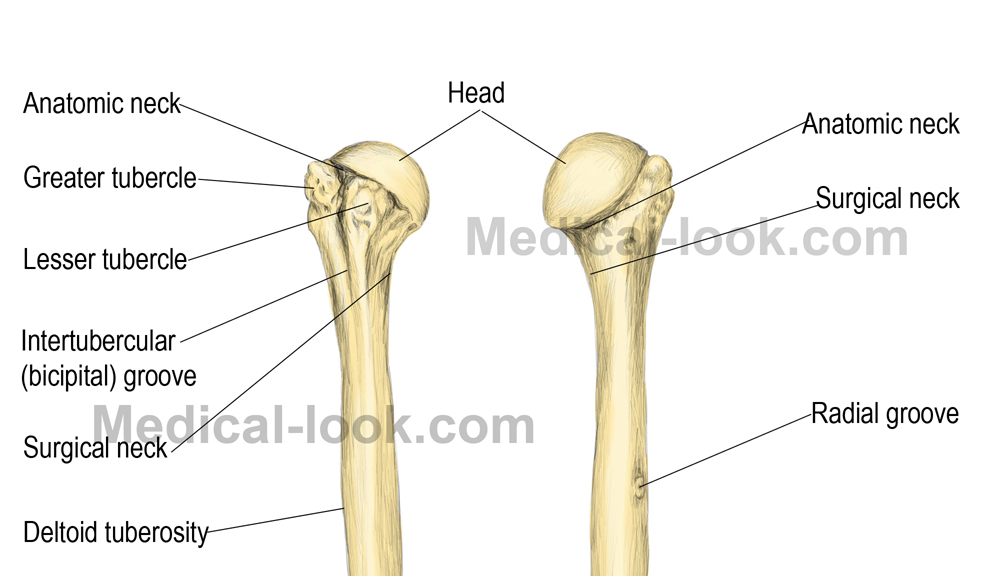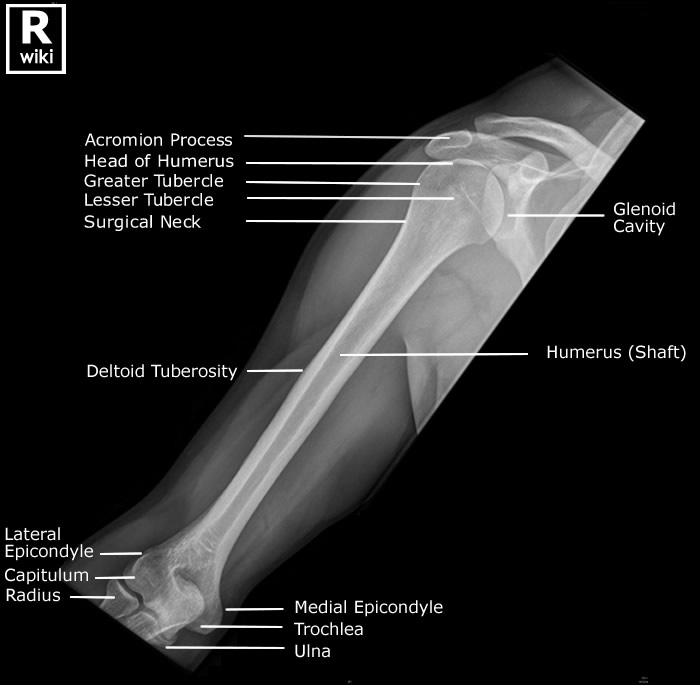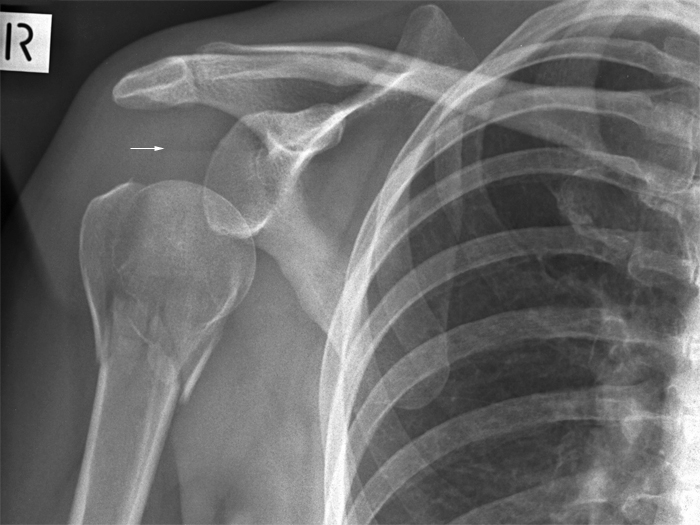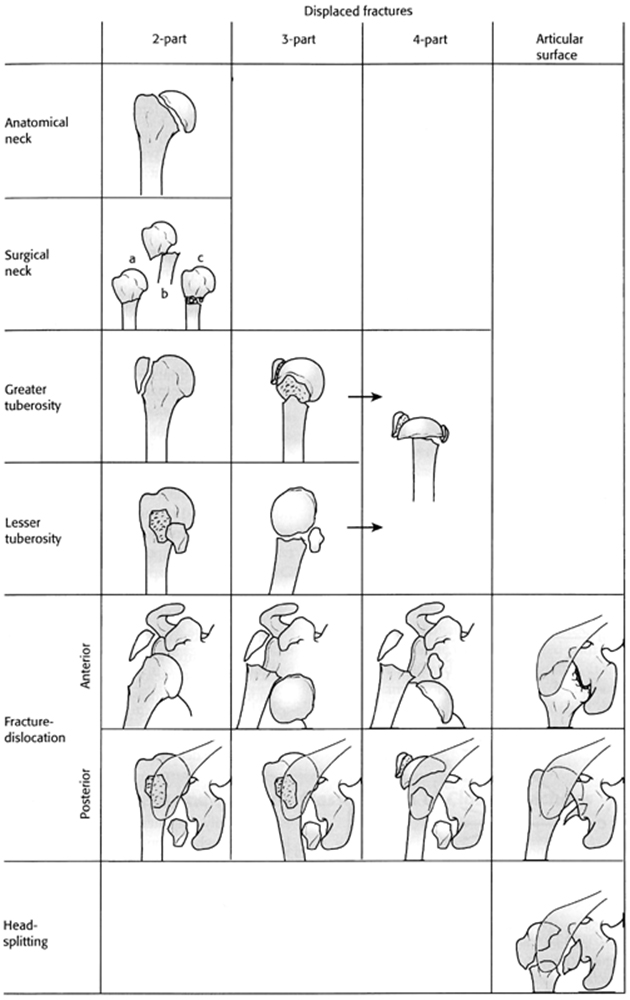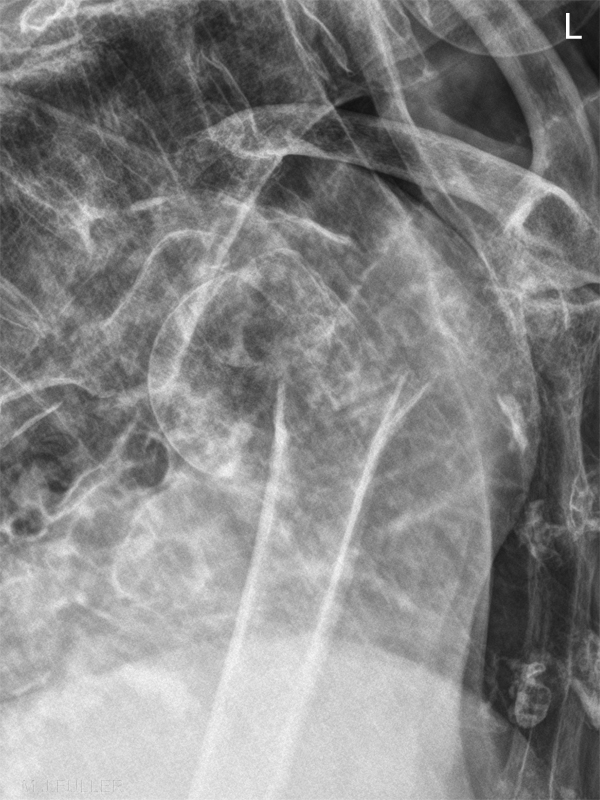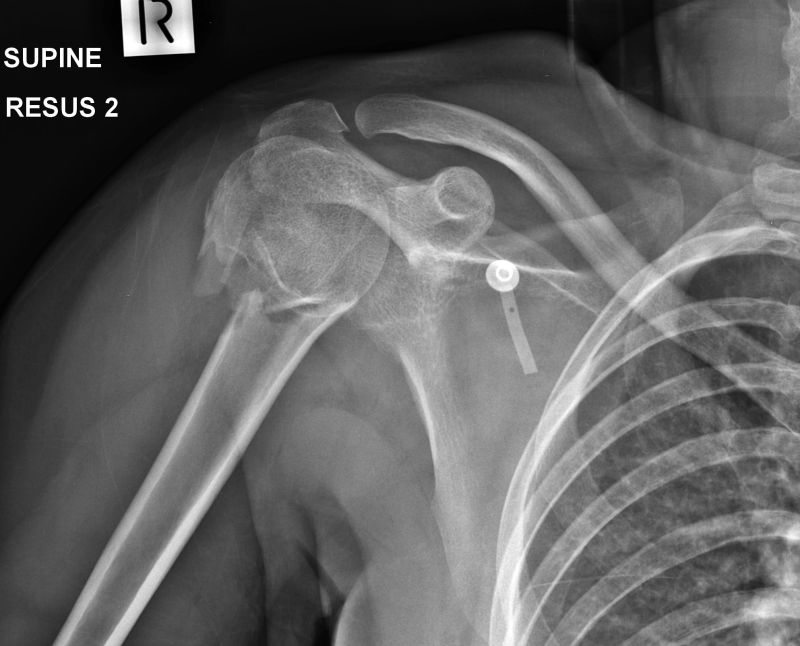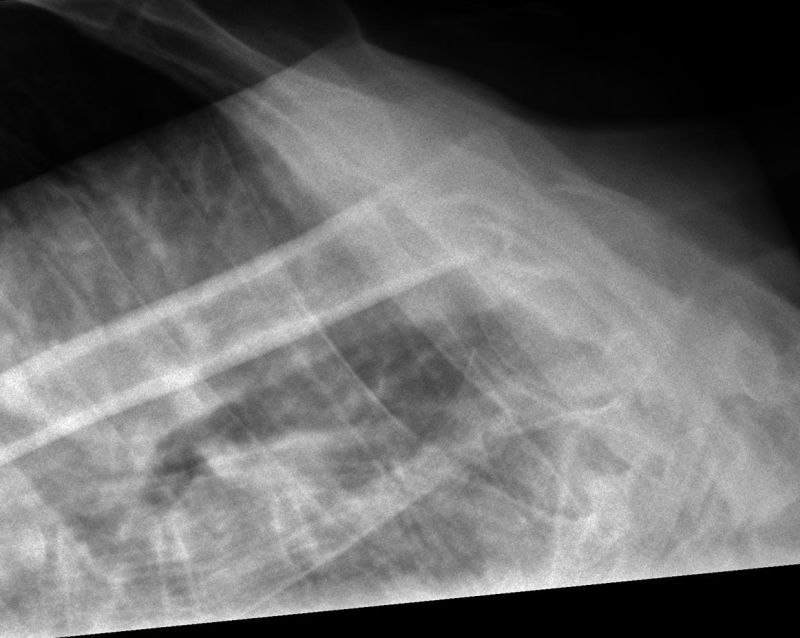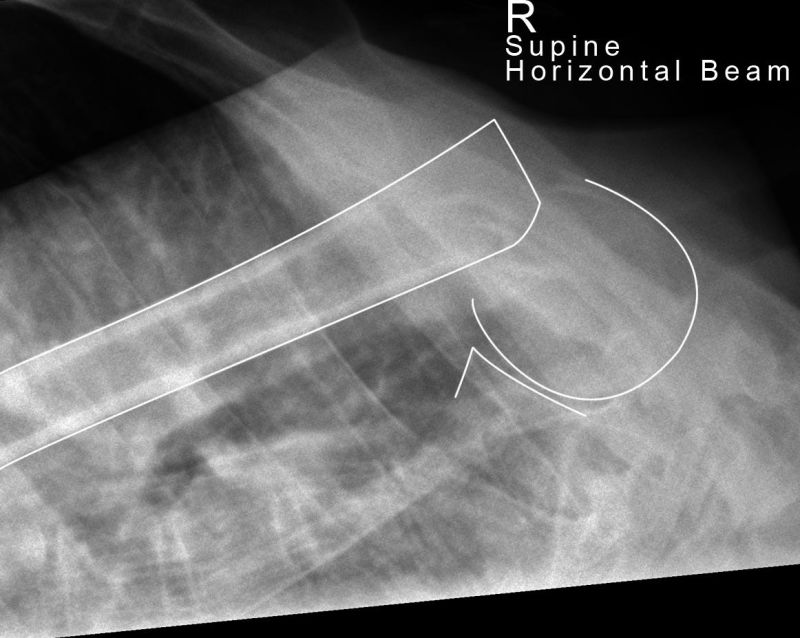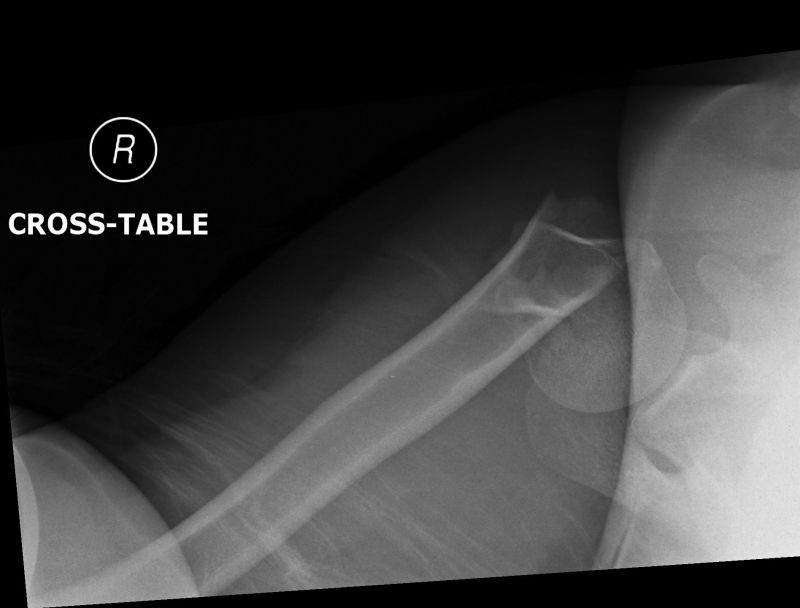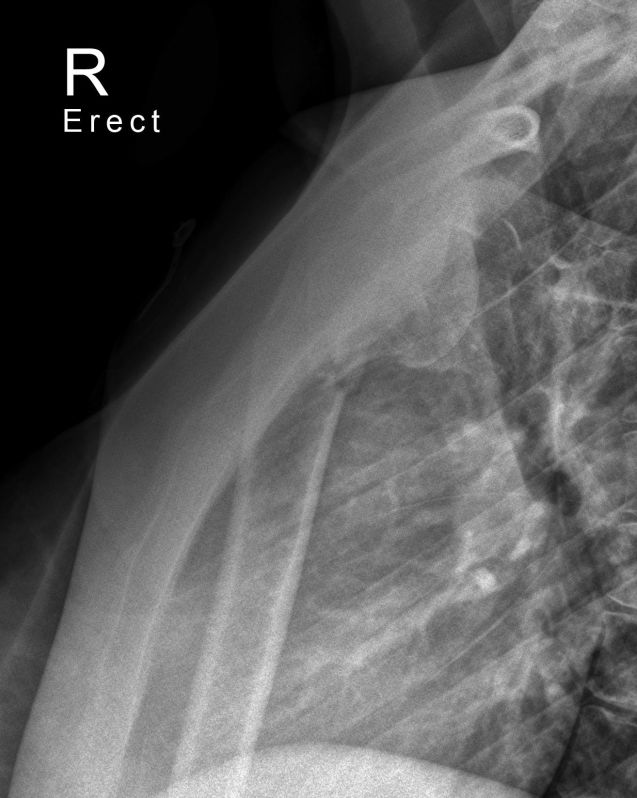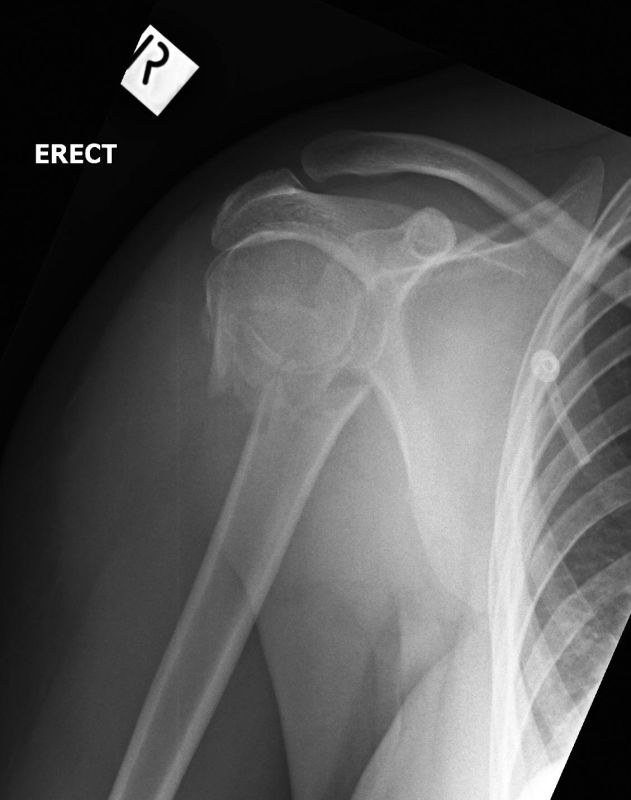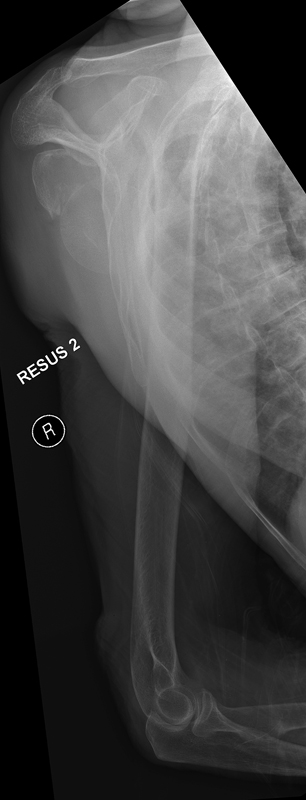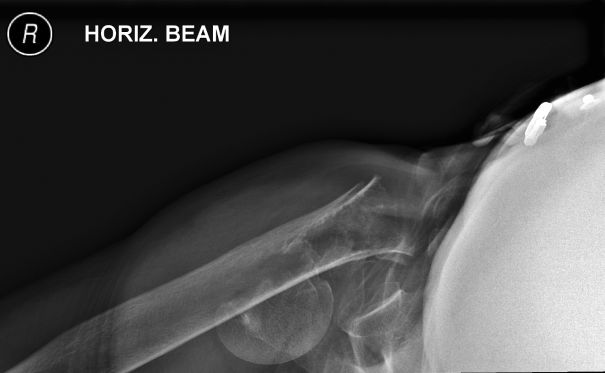Neck of Humerus Fractures
Jump to navigation
Jump to search
Anatomy
Pseudosubluxation and Lipohaemarthrosis
The Neer's Classification of Proximal Humerus Fractures
Radiographic Technique
Case 1
Case 2
... back to the Wikiradiography home page
... back to the Applied Radiography home page
Introduction
Neck of humerus fractures are commonly seen in the Emergency Department particularly in elderly patients following a fall. This page considers all aspects of radiography of neck of humerus fractures in all age-groups. The term neck of humerus fracture is interpreted broadly to include all proximal humerus fractures.
Anatomy
Pseudosubluxation and Lipohaemarthrosis
The Neer's Classification of Proximal Humerus Fractures
<a class="external" href="http://www.msdlatinamerica.com/ebooks/PracticalOrthopaedicSportsMedicineArthrocopy/sid280790.html" rel="nofollow" target="_blank">http://www.msdlatinamerica.com/ebooks/PracticalOrthopaedicSportsMedicineArthrocopy/sid280790.html</a>
Radiographic Technique
Transthoracic Lateral
The transthoracic lateral projection of the shoulder/proximal humerus is a technique that is not commonly practiced by most radiographers. The technique is a valid method for radiographic demonstration of the proximal humerus and is worthy of inclusion in the radiographers' technique toolkit.
The reasons for the lack of favour of this technique are likely to be
- the inherent superimposition of the anatomy over the patient's chest
- the need for the patient to hold very still during a relatively long exposure
- and the fact that it is a very operator-dependent technique.. it takes some practice to master
Further information here
Case 1
Case 2
... back to the Wikiradiography home page
... back to the Applied Radiography home page
